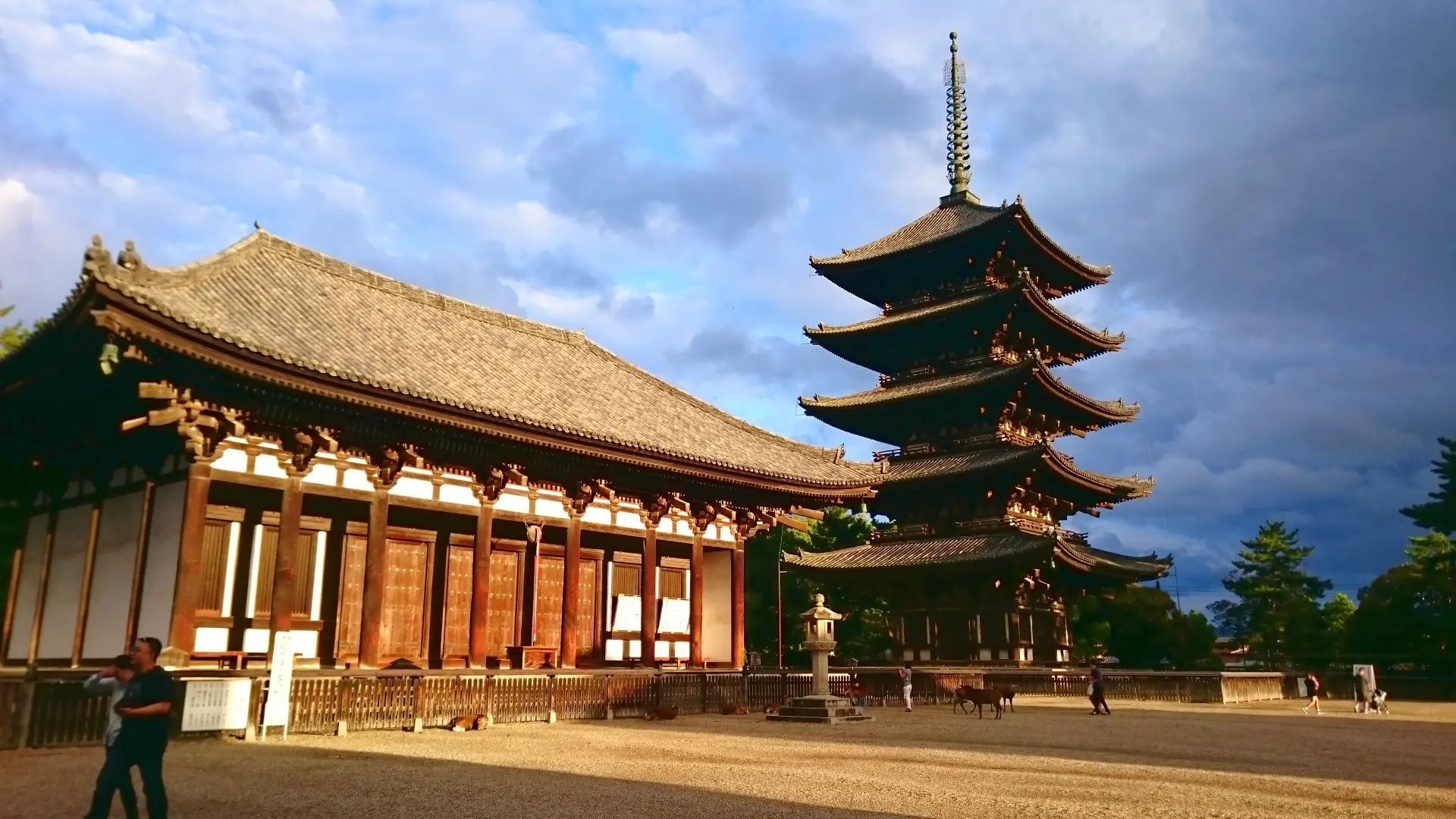Located in the heart of Nara, Kofukuji Temple is a UNESCO World Heritage Site that embodies Japan’s rich cultural and spiritual history.
Originally built in 710 as the family temple of the powerful Fujiwara clan, Kofukuji has withstood the test of time, serving as a symbol of Nara’s golden age of Buddhism. The resilience of Nara Kofukuji Temple through centuries is remarkable.
Five-Story Pagoda
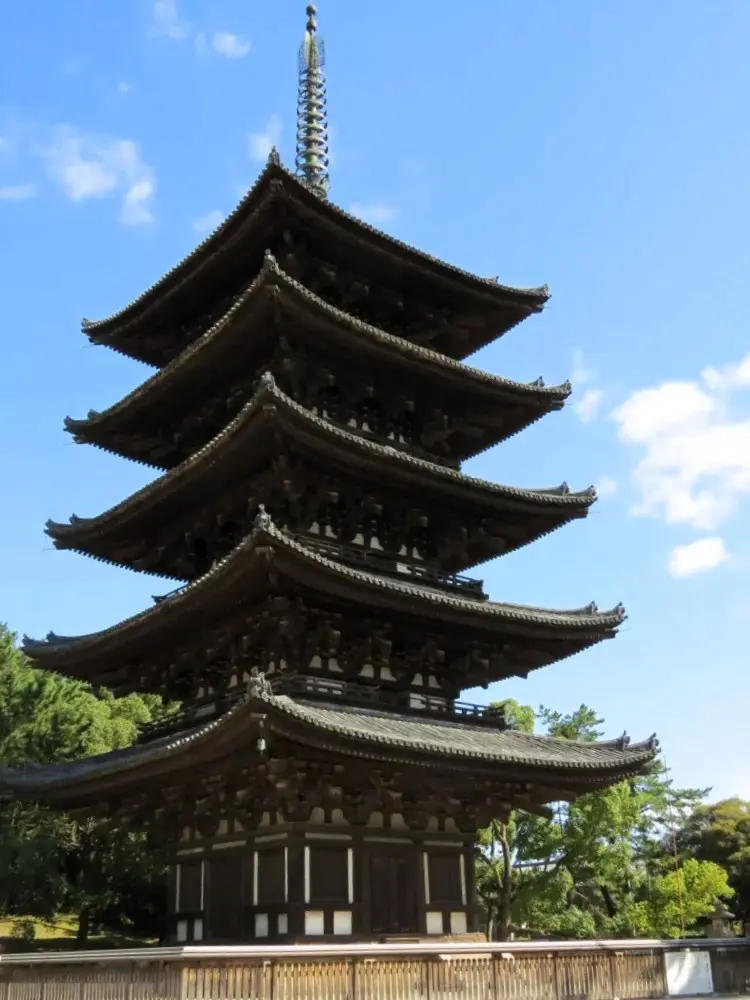
One of Japan’s tallest pagodas, the Five-Story Pagoda is a striking landmark. Originally constructed in 730, it has been rebuilt multiple times, with the current structure dating back to 1426. This pagoda adds to the grandeur of Nara Kofukuji Temple.
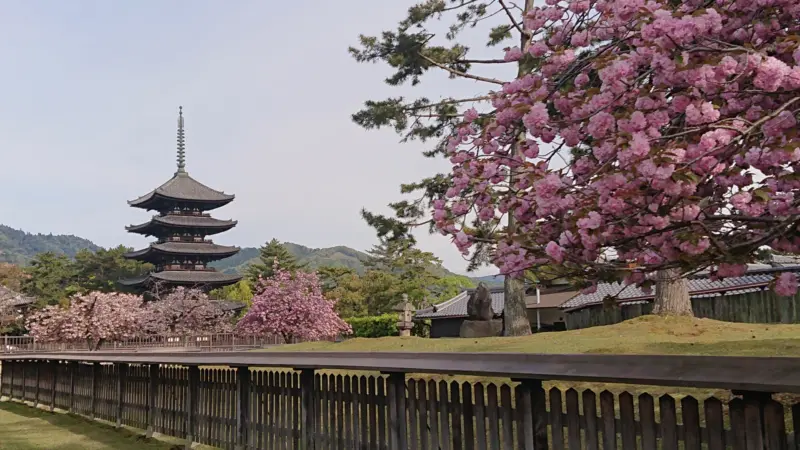
Its elegant design reflects traditional Japanese architecture and offers stunning photo opportunities.
Eastern Golden Hall (Tokondo)
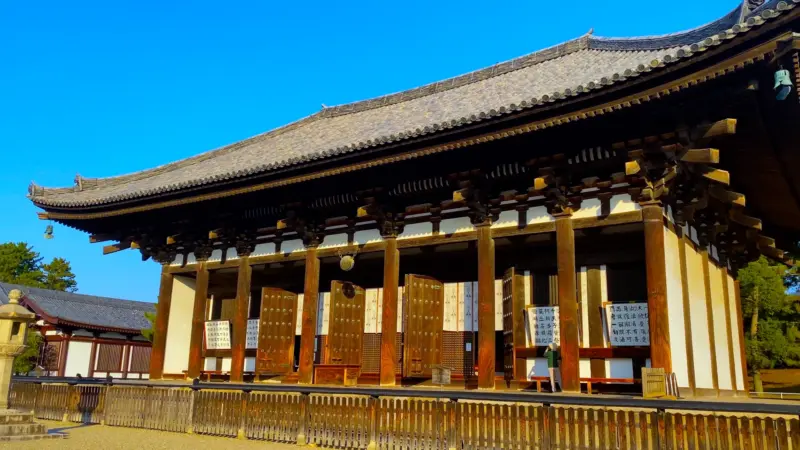
The Tokondo houses a revered statue of Yakushi Nyorai (the Medicine Buddha). Visitors to Nara Kofukuji Temple will find this hall deeply inspiring.
This hall is a must-visit for those interested in Buddhist art, as it also features intricate wooden carvings and paintings that showcase the craftsmanship of the Nara period.
National Treasure Museum
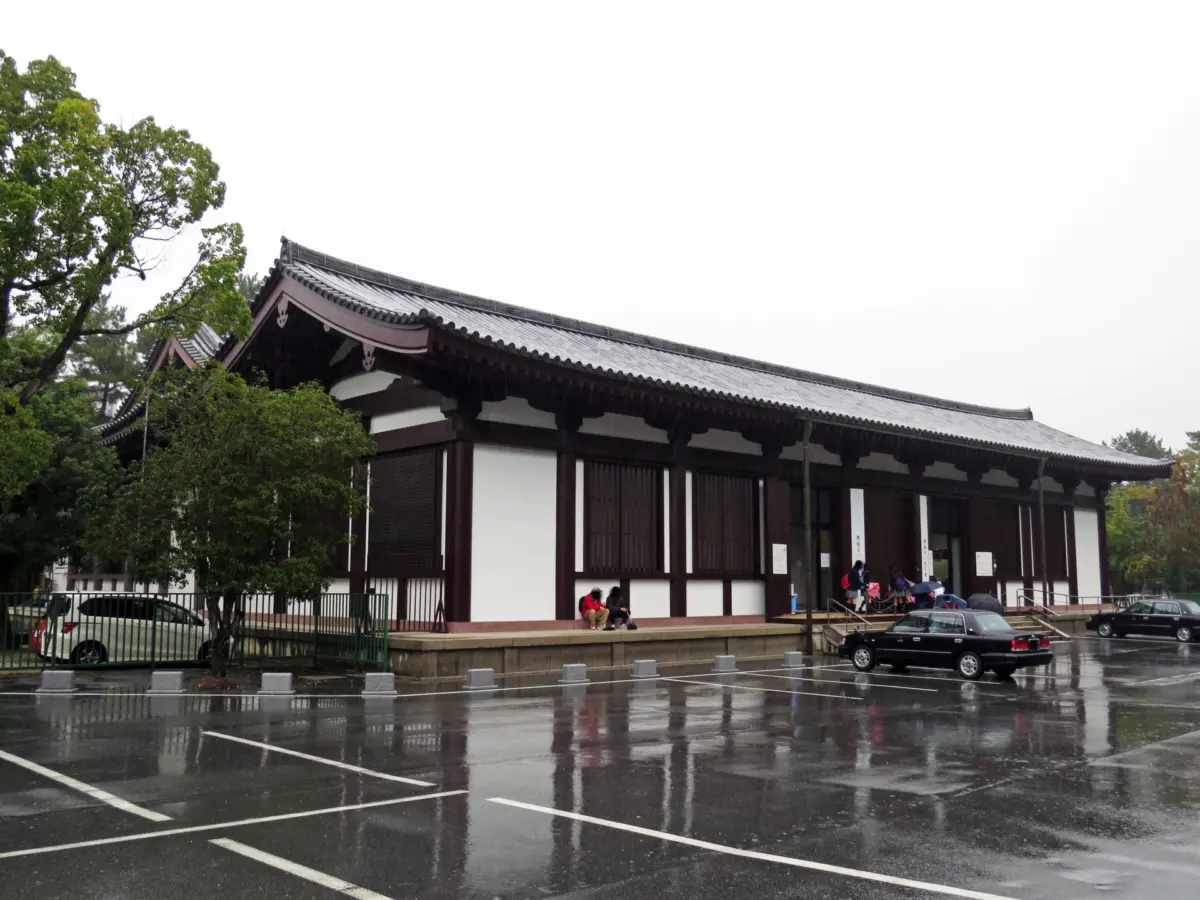
Adjacent to the temple complex, this museum holds many of Kofukuji’s cultural treasures, including bronze statues, Buddhist scrolls, and artifacts. Paying a visit to the National Treasure Museum is essential when exploring Nara Kofukuji Temple.
It offers a deeper understanding of the temple’s historical and religious significance.
The Central Golden Hall
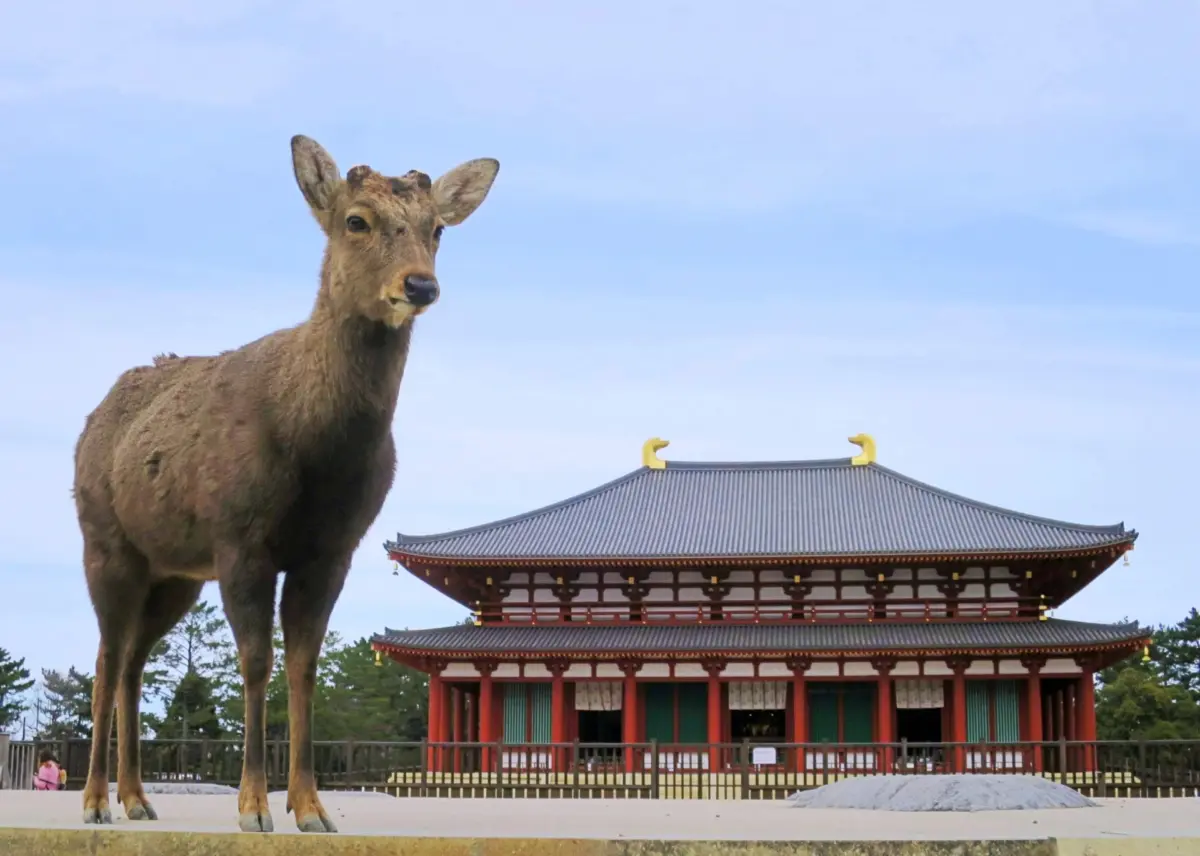
Recently restored, the Central Golden Hall is the spiritual heart of the temple. The grand hall features a central altar with exquisite Buddhist statues, providing a serene atmosphere for prayer and reflection at Nara Kofukuji Temple.
Nanen-do
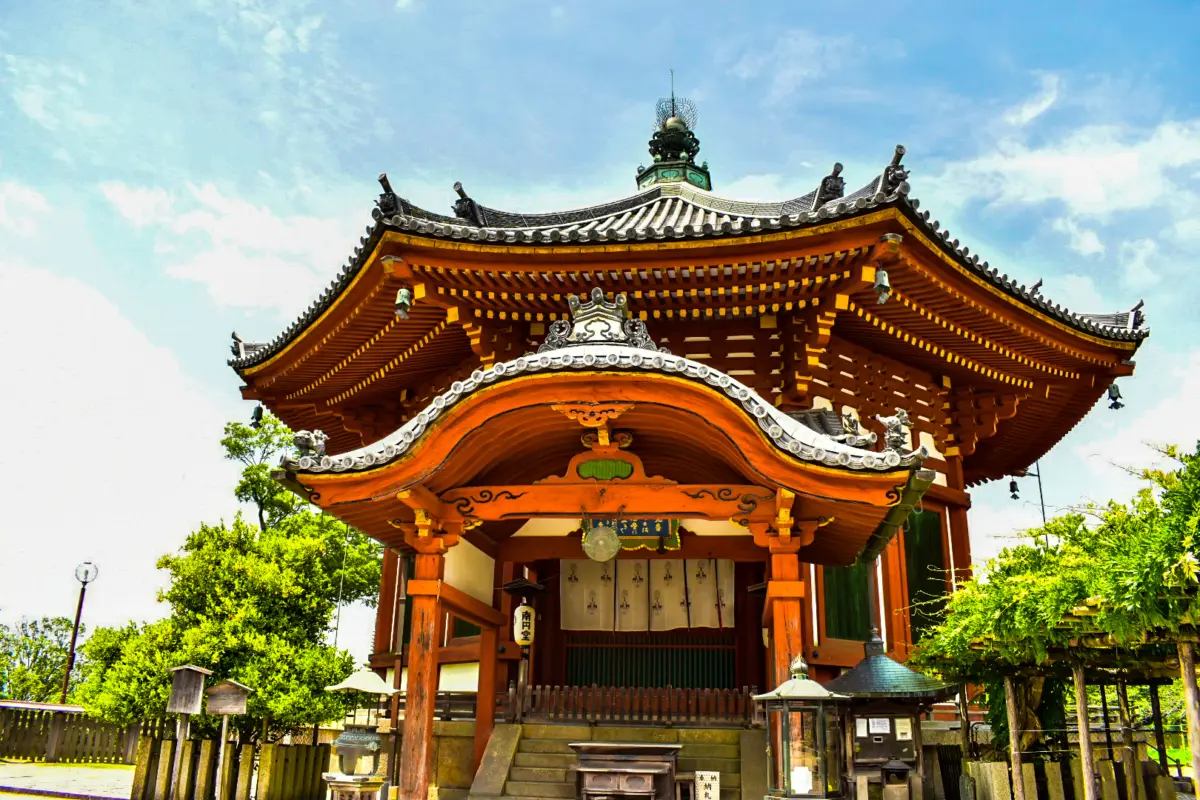
Nanen-do, also known as the Southern Octagonal Hall, is one of the significant structures at Nara Kofukuji Temple.
It is part of the Saigoku Kannon Pilgrimage, being the 9th stop on this famous route. Built in 813 by Fujiwara no Fuyutsugu, the hall enshrines Fukukensaku Kannon, a deity believed to bring good fortune and fulfill wishes.
Visitor Tips for Exploring Kofukuji Temple
- Best Time to Visit: Spring and autumn are ideal for enjoying the temple’s surroundings, with cherry blossoms and fall foliage adding to its beauty. These seasons make visiting Nara Kofukuji Temple especially delightful.
- How to Get There: From Nara Station, it’s a 15-minute walk or a short bus ride to the temple grounds.
- Admission: Entry to the temple grounds is free; however, access to individual halls, such as the National Treasure Museum and Tokondo, requires separate admission fees. Please check the official website for the latest pricing details.
Nearby Attractions
While visiting Kofukuji Temple, consider exploring these nearby attractions within Nara Park:
- Nara Park: Known for its free-roaming deer, Nara Park is a scenic spot to relax and enjoy nature.
- Todai-ji Temple: Another UNESCO World Heritage Site, famous for housing the Great Buddha statue.
- Kasuga Taisha Shrine: A beautiful Shinto shrine surrounded by a serene forest and lined with lanterns.
FAQ
The large-scale restoration, the first since the Meiji era, is expected to finish by 2031. It includes replacing roof tiles and replastering walls.
The pagoda stands 50.1 meters tall, making it the second-tallest wooden pagoda in Japan, after the Five-Story Pagoda at Toji Temple in Kyoto.
Yes, Kofukuji Temple is highly recommended. Highlights include the renovated Golden Hall, the Five-Story Pagoda, and the Eastern Golden Hall. It’s well worth exploring the temples and museums in the area.
Deer in Nara are considered sacred because they were historically seen as divine messengers of the thunder god, Takemikazuchi. According to legend, he arrived in Nara riding a white deer.
| Name | Kofukuji Temple |
|---|---|
| Address | 48 Noborioji-cho, Nara, 630-8213, Japan |
| Access | A 10-minute walk from Kintetsu Nara Station or a 20-minute walk from JR Nara Station. |
| Hours | 9:00 AM – 5:00 PM (Last admission: 4:45 PM) |
| Admission | Free entry to temple grounds. Entry fees for National Treasure Museum : ¥700 for adults. Check the official website for details. |
| Social Media | |
| URL | Visit Official Website |
| Map | Google Maps |

